Matador Network's Blog, page 1043
August 1, 2019
Best countries for celiacs
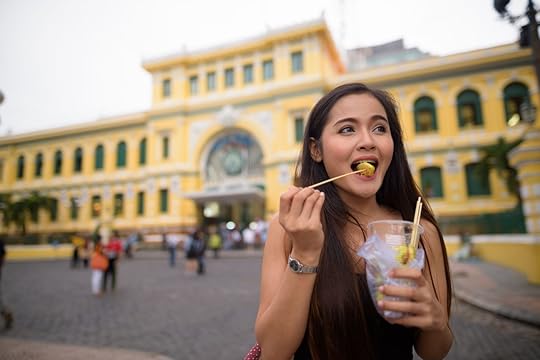
If you’ve had the dreaded biopsy which confirms celiac sprue disease or just know that your body’s reaction to gluten is uncomfortable, it can put a real damper on dreams of travel. Especially when nearly every country in the world has its own spin on a sandwich or dumpling, and deep-fried, battery food dominates street stalls. The good news is that it’s actually pretty easy to eat around the problem, and still call yourself a foodie. With a little research and planning, there are few places one can find that don’t (or can’t) offer gluten-free foods or food alternatives. Armed with some key information, here are seven of the easiest travel destinations for celiacs.
1. Italy

Photo: natalie_maroz/Shutterstock
A celiac sufferer traveling in a country known for its pasta may seem like an oxymoron but pasta’s popularity is exactly why they should. There is a great deal of public awareness about celiac disease in Italy, thanks to the Italian Celiac Association. There are thousands of restaurants with “senza glutine” menus throughout the country and even every small town has at least one place to eat. An added plus, Italy is also known for its seafood, produce, risotto, and polenta so…eat it up. And perhaps the best news is that there’s no gluten in gelato.
2. Vietnam

Photo: /Shutterstock
Vietnam’s coastline that stretches over 2,000 miles and temperate climate mean bounties of , from seafood to fruits and veggies. Beyond the gluten bomb of banh mi, travelers can easily eat here knowing that many other popular dishes — from pho to bun bo nam bo — are rice-based. A croissant may not be on your menu, but you can still enjoy other dishes with the French-influence the country is known for such as banh xeo, a savory, rice-based crepe stuffed with meat, vegetables, and fresh herbs.
3. Costa Rica
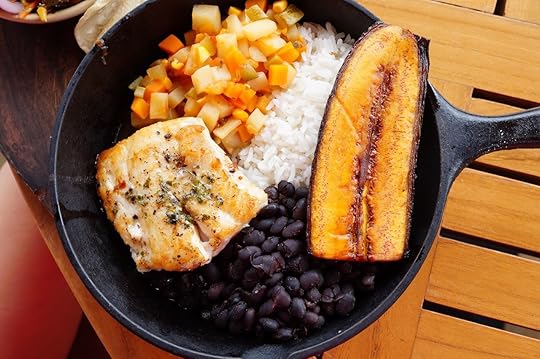
Photo: EQRoy/Shutterstock
Eating like a local here will make celiacs happy as traditional Costa Rican cuisine is generally gluten-free. Consisting mostly of the fresh bounty from its rich-soiled interior land and that of the sea, the most prevalent dishes include plantains, rice, beans, vegetables, fruits, and corn. Thanks to its warm, wet climate and volcanic soil, it’s hard to find fruits and vegetables that aren’t freshly harvested. This makes fruit and vegetable dishes in Costa Rica especially delicious with creative options including gazpacho, patacones (smashed, deep-fried plantains with fillings), and inventive smoothies.
4. Mexico

Photo: Tatiana Chekryzhova/Shutterstock
“Corn is life,” say many in Mexico. Corn is central to Mexican culture and therefore, to its food. From tamales and tacos to atole and pan de elote, celiacs can find a dearth of corn-born, gluten-free options throughout Mexico. Thanks to its east and west borders being the Carribean Sea and Pacific Ocean, fresh seafood is also common in many dishes along the coasts and inland, and fresh produce and exotic fruits are easily available at popular markets and in restaurants. Unfortunately, churros are not gluten-free but the ubiquitous paleta, with its infinite combinations, can satisfy just about any sweet tooth.
5. India

Photo: MayankYadav/Shutterstock
Specifically, south India. While most Indian cuisine is gluten-free by default, in the south rice is more common and serves as the base for delicious dosa, made from a fermented batter of rice and lentils. Another treat is appam, a sweet pancake made of rice and coconut milk. Either way, north or south, it’s relatively easy to eat gluten-free in India because when it all comes down to it, it’s all about the spice.
6. United States

Photo: Jeremy Pawlowski/Shutterstock
Thanks to its regional and cultural diversity, eating gluten-free in the US is pretty easy. Large cities have many restaurants that cater to those with food sensitivities, the best for celiacs include Detroit, Denver, Seattle, and Phoenix. Portland, Oregon, hosts a heavy concentration of entirely gluten-free restaurants, gluten-free breweries, and even a gluten-free food allergy festival. Travel in the Southwest, even through small towns, is made easier as the regional cuisine is centered around corn — similar to Mexican food but with more spice from the ever-popular chile.
7. Ireland

Photo: Bartosz Luczak/Shutterstock
Ireland has one of the highest rates of celiac disease in Europe which is rough, but also an opportunity that many restaurant owners have taken advantage of. Planning a trip to Ireland is made even easier by the prevalence of country, and even town-specific, celiac guides found on the web. Also, as everyone knows, Ireland is famous for its potatoes. While people may tell you to go for the Guinness because it is wheat-free, be aware it is made of malted barley which contains a protein called “hordein,” which is similar to gluten and can cause complications for confirmed celiacs.
Pro-tips for traveling with a wheat allergy
Learn how to say “I am allergic to wheat” or “I am gluten-free” in the language of your destination. If you can’t remember or are visiting multiple countries, keep the phrases on your phone, or even better, on laminated paper in a safe, easy-to-access place.
There are many online travel guides and bloggers specific to gluten-free travelers, as well as helpful apps designed for gluten-free people eating out. Search them out and note food items and restaurants near the areas you plan to visit.
Stay away from items that are breaded, fried, or toasted unless you can confirm they are gluten-free and cooked in a designated gluten-free fryer or toaster.
Airports and airplanes are notoriously difficult places to find gluten-free items. If available, remember to order a gluten-free meal for your flight as you are making your reservation. Most airlines that do offer meals require special meals to be requested in advance. A good idea is also to pack yourself a variety of gluten-free snacks in case of a hunger emergency; popular items for travel include gluten-free snack bars, jerky, nuts, and dried fruit.


More like this: If everyone ate the recommended amount of fruits and veggies, there wouldn’t be enough to go around
The post Easiest travel destinations for celiacs and tips on how to avoid getting ill appeared first on Matador Network.

Relaxing cities in the world

It’s perplexing how some people still stress on vacation. They spend all year commuting to difficult jobs, standing on weekend lines at Costco, and fighting for parking just about everywhere. Only to venture to a new city and do the same time-crunched crowd management they do at home. The key to a good vacation is finding a way to relax, and though a Caribbean beach is always a great place to do it, some people want the energy and culture of a city too.
To help you find that ideal mix of urban excitement and vacation chill, Asian fashion blog YesStyle looked at stuff like weather, hiking trails, number of spas, air quality, and annual hours worked to find the best cities in the world for relaxation. And while some might surprise you, none should stress you out.
1. Vienna, Austria
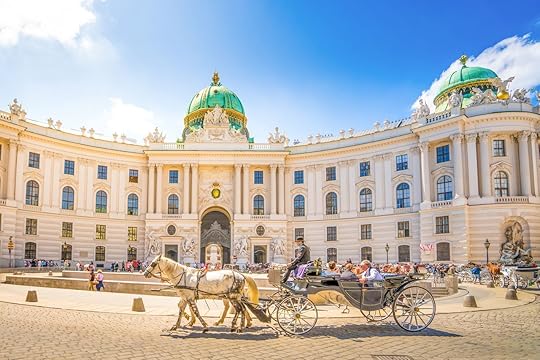
Photo: LaMiaFotografia/Shutterstock
As long as you’re not stressing about money, the Austrian capital can be the most relaxing city in the world — so much so that Billy Joel wrote a whole song about it. Though only about half of its days are sunny, that makes the air exceptionally clean so you can enjoy a beer at Badeschiff Wien, a floating bar on the Danube. You can also breathe in the greenery at Steinhofgründe or any of the city’s other acclaimed parks. Or simply unplug and immerse yourself in one of Europe’s capitals of great architecture.
2. Portland, Oregon

Photo: Josemaria Toscano/Shutterstock
It’s hard to get stressed in a city known for vegan food, book shops, and proximity to the Columbia River Gorge. Portland ranked second-highest in air quality among US cities surveyed, and boasts 351 hiking trails across only 145 square miles. The Rose City is also full of cool breweries to relax with a cold one, most famously Deschutes and 10 Barrel. But for non-alcoholic fun, you can also wander through Forest Park or hit the Portland Japanese and Lan Su Chinese Gardens.
3. Munich, Germany
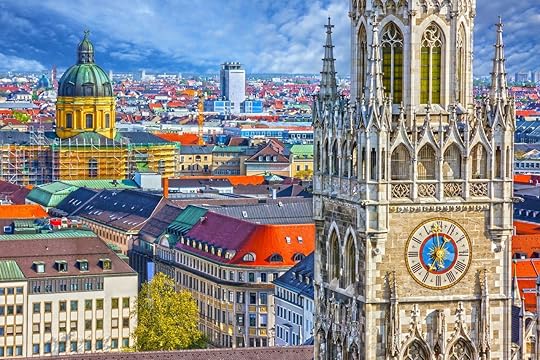
Photo: Vlada Zhi/Shutterstock
Avoid this city during the hectic weeks of Oktoberfest, and you’ll find a quaint German metropolis with over 350 hiking trails and some of the best air quality in Europe. Enjoy some of Bavaria’s famous beer while floating down the Isar River in a giant raft, a perfect way to relax and appreciate the thick forests without leaving the city. If you’d rather stay stationary while drinking, you can also soak up some suds at one of the city’s many beer gardens, including Waldwirtschaft and Augustiner Bräustuben. Drive half an hour out of Munich and you’ll find Lake Starnberg, a calm freshwater lake with stunning mountain views. Or hang out in one of the city’s designated urban naked zones, if being naked doesn’t stress you out.
4. Seattle, Washington

Photo: Luismm82/Shutterstock
Despite ever-growing traffic and a famously dreary climate, Seattle is still a masterful combination of urban amenities and natural relaxation. With the highest air quality of any American city in the study, it makes for the perfect environment to enjoy any of the city’s 495 hiking trails. Seattle also offers plenty of opportunities to get close to the water, whether that’s visiting the famous Sound Garden at Magnuson Park, jogging a couple of laps around Greenlake, or kayaking out on Lake Washington.
5. Denver, Colorado

Photo: f11photo/Shutterstock
Interesting that three most-relaxing cities in America also have recreational marijuana. Not that we’re insisting you relax at one of the Mile High City’s nearly 400 dispensaries (that’s more than Starbucks and McDonald’s combined), or venture into its burgeoning CBD scene. You can, but plenty of clear-headed relaxation abounds in a city with 600 hiking trails and less than 90 days of rain. There’s the Rocky Mountain Arsenal National Wildlife Refuge, where you can wade among tall grass and commune with mule deer, pelicans, and bald eagles. Or listen to live music at the Denver Botanic Gardens, which offers a top-tier summer concert series.
6. Berlin, Germany
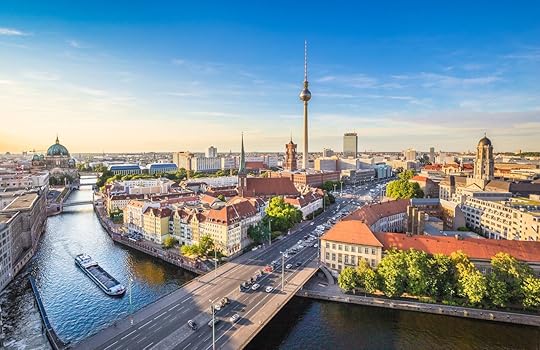
Photo: canadastock/Shutterstock
A city best known for its all-night parties, intense history, and underground sex clubs might not immediately strike one as “relaxing.” But since Berliners don’t work too hard — only 1,356 hours a year on average — the city is also full of diversions perfect for a clear-minded visitor. There are only 25 hiking trails, but a whopping 488 spas, so a massage should definitely be in order. Afterward, you can calm down while amping up at YogaCafé in Prenzlauer Berg, which serves up coffee with a side of Warrior One. If you’re in town on a hot day, take a dip in Badeschiff, a public swimming pool that juts out into the Spree. In the winter it’s covered with domes so the pool party doesn’t have to stop.
7. Minneapolis, Minnesota
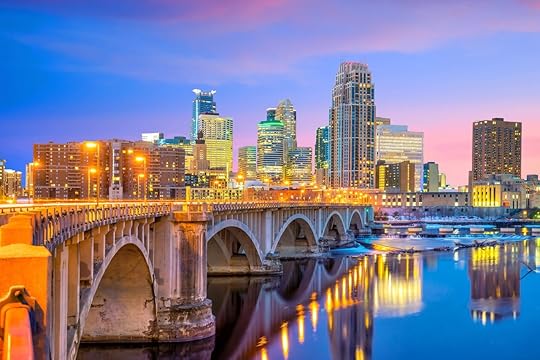
Photo: f11photo/Shutterstock
Frigid winter aside, Minneapolis can be one of the best cities in the county for outdoor recreation if you know where to look. The Land of Ten Thousand Lakes has several lakes within its biggest city, including the popular Chain of Lakes with 15 miles of paved pathways along its shores. Minneapolis is also home to 197 parks, meaning — as the city famously claims — you’ll never walk six blocks without finding one. You’ll also find urban waterfalls along the Mississippi River when you head into Minnehaha Regional Park, the perfect place to let the crashing water remove you from the stress of life at home.
8. Sydney, Australia
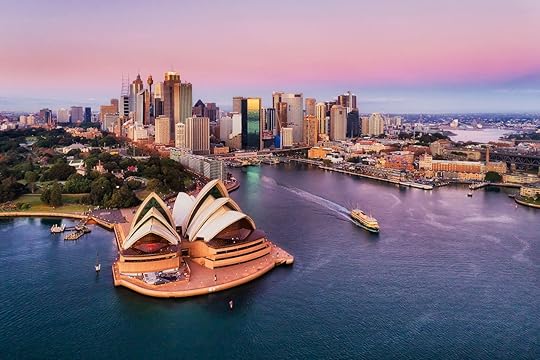
Photo: Taras Vyshnya/Shutterstock
For the largest city on an entire continent, Sydney is remarkably calming. With an average temperature in the mid-60s and over 250 sunny days a year, it’s hard to feel down any time you visit. It can be an exceptionally perfect escape in January, when the annual Sydney Festival takes over the city and brings live theatre, music, and art to dozens of venues. The rest of the year, you can unwind on the sands of Bondi Beach or inhale the local flora at the Royal Botanic Garden. You can also take some time out at Observatory Hill Park, which might offer the best view of the city that’s not at the top of a tourist attraction.
9. Glasgow, Scotland

Photo: CappaPhoto/Shutterstock
Don’t go to Scotland’s second-largest city expecting a fun-in-the-sun escapade. But for arts, culture, and immersion into Scottish culture, no place is better. Okay, so Glasgow has over 1,100 inches of annual rain, but with an average temperature of 48 degrees, it’s never too cold to enjoy one of the city’s 279 hiking trails. If you’d rather not get drizzled on, spend the day in the Kelvingrove Art Gallery and Museum, or hit the Hunterian if you want to avoid the crowds. The Riverside Museum is a Zaha Hadid-designed look into transportation and how it’s shaped human existence. And the Glasgow Science Center offers the best view of the city from its 417-foot revolving tower.
10. Boston, Massachusetts
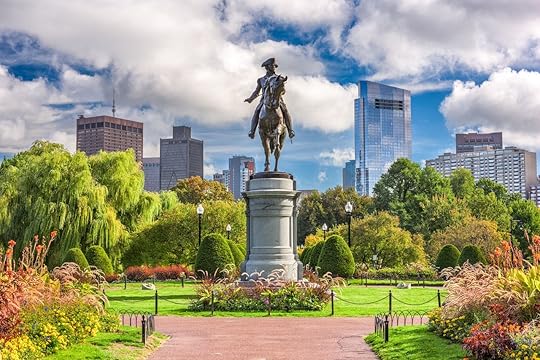
Photo: Sean Pavone/Shutterstock
Anyone who’s ever driven in Boston might disagree with it being anything close to relaxing, but stay off the roads (or leave the driving to the pros) and you can find a perfectly tranquil vacation. Head to the city anytime but summer, and the Freedom Trail can be a calming way to see the city and learn tremendous amounts of American history at your own pace, without dealing with museum crowds. There’s also the Boston Common, one of the great urban green spaces in the country. Or you can take a Venetian gondola down the Charles River with Gondola di Venezia. Boston also has a surprising 583 hiking trails, so no matter when you visit you’ll find someplace to escape the crazy drivers.
11. Miami, Florida
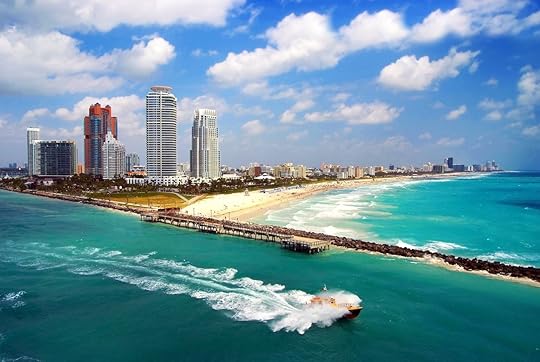
Photo: Just dance/Shutterstock
What’s more relaxing than dipping your toes in the Atlantic Ocean, fruity drink in hand, and posting a picture of a winter weekend in Miami? Maybe a head-clearing drive through the Everglades, paddling a kayak through ancient mangroves at Oleta River State Park, or heading underwater and enjoying complete silence along the closest coral reefs to any American city. A trip to Miami doesn’t have to mean dealing with overcrowded clubs and tourist-trap restaurants. Taking advantage of the water that surrounds the place makes for a far less stressful trip.
12. Melbourne, Australia
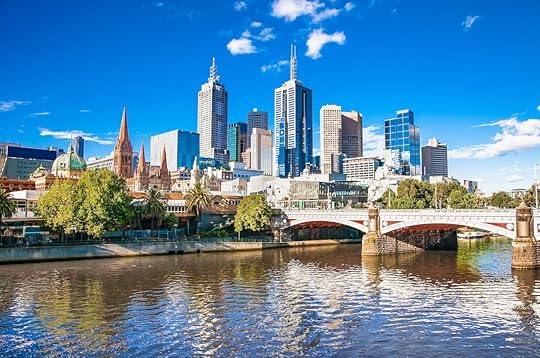
Photo: Aleksandar Todorovic/Shutterstock
Melbourne is often cited as the not-as-crazy, just-as-awesome alternative to massive Sydney. And for good reason. The city has a whopping 111 spas, so you’re never far from a massage. And with nearly 2,400 annual hours of sunshine you’ll have plenty of opportunities to get out on any of its 176 hiking trails. Or hang out under the southern sun at beaches like St. Kilda and Brighton Dog Beach. If you do happen upon some rain, head indoors to the massive reading room at the State Library, or float your worries away in an Epsom salt bath at the Gravity Floatation Centre.
13. San Francisco, California
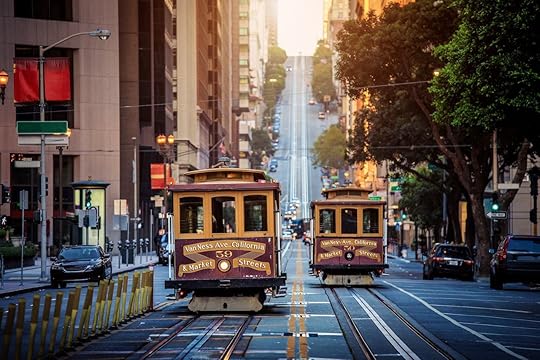
Photo: canadastock/Shutterstock
A city as densely populated as San Francisco might not immediately lend itself to relaxation. But with 490 hiking trails in only 47 square miles, it’s also the most concentrated hiking city in America. Golden Gate Park is your most obvious spot for an urban nature getaway, but if your calves are feeling strong head just over the Golden Gate Bridge and trek up to Battery Spencer Overlook for a calming view of the city. If you have a car — and aren’t stressed out by traffic — you might also consider crossing the Bay Bridge to Oakland and taking a train ride through Tilden Regional Park. Surrounded by eucalyptus and redwood trees, you’ll almost forget you’re less than an hour from one of the busiest cities in the world.
14. Porto, Portugal
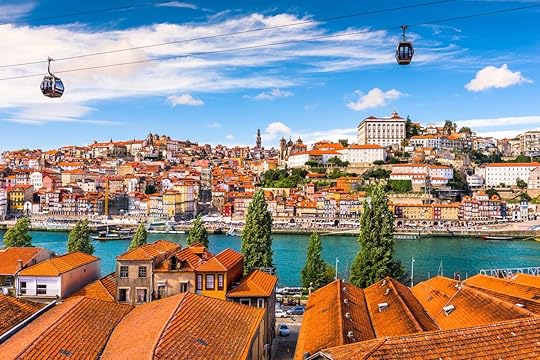
Photo: ESB Professional/Shutterstock
The heart of Portuguese wine country seems a pretty logical place to relax, so no huge surprise here. Aside from sipping your troubles away, however, Porto has a ton of destressing activities to offer. The Foz do Douro neighborhood is particularly calming, with five of the city’s best beaches and waterfront parks to enjoy a sunset by the ocean. If aromatherapy is your relaxation method of choice, head out to Cantinho das Aromáticas, a farm that grows botanicals, herbs, and teas. If you’re more the curl-up-with-an-animal-to-unwind type, hit O Porto dos Gatos, the city’s only cat cafe where you can enjoy a book, coffee, and the in-house cat of your choice.
15. Chicago, Illinois
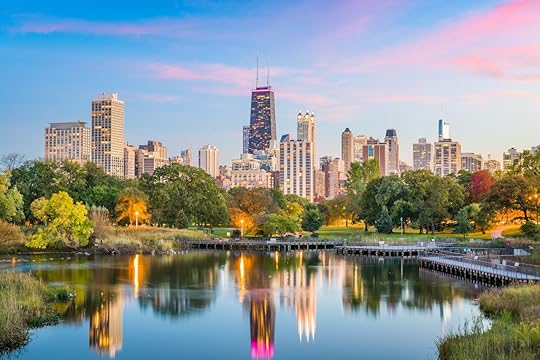
Photo: Sean Pavone/Shutterstock
The third-largest city in America somehow squeaked onto this list, thanks mostly to its 321 spas and 218 urban hiking trails. In the summer, finding Windy City relaxation is easy, whether that means soaking in the lake air at one of the city’s beaches, strolling Grant or Millennium parks, or taking in a game at Wrigley Field. But should you catch Chicago on one of its off days, plenty of indoor activities abound, including admiring the stars at Adler Planetarium, visiting the undersea world at the Shedd Aquarium, and exploring natural history at the Field Museum. 

More like this: The best countries to move to get healthy for good
The post The 15 most relaxing cities in the world appeared first on Matador Network.

Woodstock 50 canceled

Woodstock 50, the highly anticipated festival organized to commemorate the 50th anniversary of the famous 1969 Woodstock music festival — has finally been canceled. Originally planned to take place in Watkins Glen, New York, and feature world-renowned artists, Woodstock 50 is no longer on life support, as organizers have thrown in the towel in the wake of a myriad of setbacks.
The festival hit a major snag back in April when it lost the New York venue, the main investor pulled funding, and artists like Jay-Z, Miley Cyrus, Santana, and others all backed out. Although festival organizers found new investors, and relocated the event to Maryland, it wasn’t enough. Too many production milestones have been missed to make the project tenable — specifically targets for ticket sales — and the festival has finally been canceled for good.
In a statement on Wednesday, the Woodstock organizers said, “Woodstock 50 today announced that the three-day festival to celebrate its 50th anniversary has been cancelled. We are saddened that a series of unforeseen setbacks has made it impossible to put on the festival we imagined with the great line-up we had booked and the social engagement we were anticipating.” 
This article was updated on August 1, 2019.

More like this: Every summer music festival lineup that’s been announced so far, and who you need to see
The post Woodstock 50 is officially canceled appeared first on Matador Network.

Anthony bourdain new book

Although Anthony Bourdain passed away more than a year ago, tributes to his legacy — food trails, college courses, and the like — continue to pour in. This month, a new book titled Anthony Bourdain: The Last Interview and Other Conversations will contain a collection of interviews from throughout his career. The discussions cover everything from the culinary arts to travel, and include candid conversations with well-known figures that will even further highlight the wit and wisdom of this travel legend.

Photo: Melville House
The book will include interviews with Neil Degrasse Tyson, Trevor Noah, and according to Melville House’s description, “his wit, passion, and deep intelligence shines through all manner of discussion here, from heart-to-hearts with bloggers, to on-stage talks before massive crowds, to intense interviews with major television personalities.”
In an Instagram post, food correspondent for The New Yorker Helen Rosner, who wrote the book’s introduction, said, “Honored to have written the introduction for this @melvillehouse tribute to a great and complex and blisteringly curious man”
The book will be out on August 20, and you can pre-order it online. 

More like this: The 13 wisest things Anthony Bourdain said about travel
The post ‘Anthony Bourdain: The Last Interview’ is coming this month appeared first on Matador Network.

Bottlenose dolphin adopts whale calf

Interspecies adoption is extremely rare for wild animals. Only one case of a wild mammals adopting an infant from a different species was ever documented (a group of capucins adopting a marmoset) before scientists from the Groupe d’Etude des Mammifères Marins (GEMM) confirmed that a dolphin mom adopted a melon-headed whale calf in the coastal waters of French Polynesia. This is the first ever documented case of interspecies adoption for marine mammals.
The study, published in Ethnology, details how the bottlenose dolphin mom cared for a young melon-headed whale from 2014 to 2018. This is an even stranger phenomenon considering the dolphin already had a biological baby, and dolphins usually only care for one calf at a time.
The study claims that the whale competed actively for the mother’s attention, rarely leaving her side. Although he didn’t socialize with the dolphin community as much as his adoptive sister, he did start to exhibit bottlenose behaviors, like surfing and jumping.
Although female bottlenose are sometimes known to kidnap the calves of other species, that is likely not the case here, since the mother already had her own biological offspring.
According to Pamela Carzon, one of the leading scientists involved in the study, “It is very difficult to explain such behavior, especially since we have no information on how the melon-headed whale newborn was separated from his natural mother.”
The biological female calf disappeared at about one-and-a-half-year-old for unknown reasons, but the adopted melon-headed calf stayed for several years by her side before being weaned and later expulsed from the dolphin group “in a rather brutal fashion,” explained GEMM. 

More like this: Science shows marine mammals hate drones, so let’s knock it off
The post Bottlenose dolphin adopts whale calf — a first for marine mammals appeared first on Matador Network.

July 31, 2019
The best places to surf in Mexico
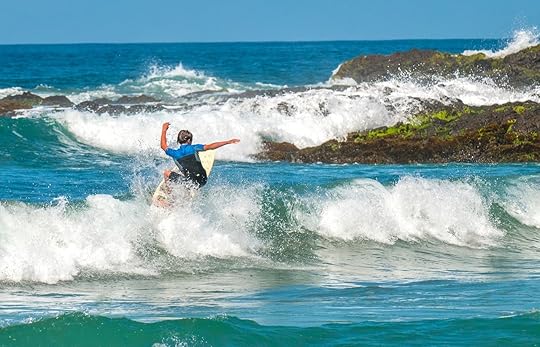
With 4,500 miles of Pacific coastline, Mexico is packed with excellent surf spots — with every type of wave and very different vibes at each surf location. You can camp on the beach in Cabo or glam it up at a waterfront villa in Punta Mita. You can be far from the nearest anything in Saladita or strolling through a boho chic village in Sayulita. Anywhere you go, a mix of surf breaks means both beginners and experts will find a wave suited to their skill level. Here are the top surf locales south of the border.
1. Sayulita
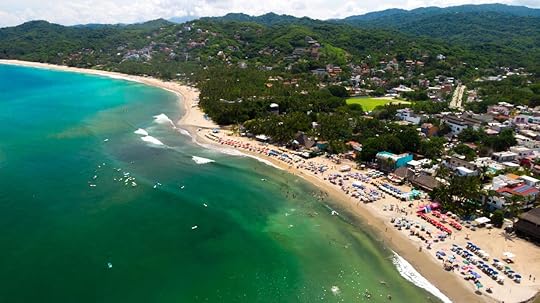
Photo: Andrea De la Parra/Shutterstock
Sayulita — located in Nayarit, about an hour’s drive from Puerto Vallarta — has been a surfer mecca for several years. It combines excellent surf conditions with probably the most charming town of the bunch. The wave directly in front of the town is a slow-forming, gentle roller that’s perfect for beginners and longboarders. North of town by San Pancho, you’ll find a fast wave carved up by more experienced surfers.
On land, Sayulita offers multiples lodging options, from the Villa Amor hotel, with its thatched roof cabanas built into the hillside, and low-key beachfront houses for rent. There are also the Aurinko Bungalows owned by a Finnish transplant, who also owns the Sininen surf shop. Then there’s the impossibly hip Pachamama boutique owned by a French family, whose members also include several competitive surfers.
2. Punta Mita
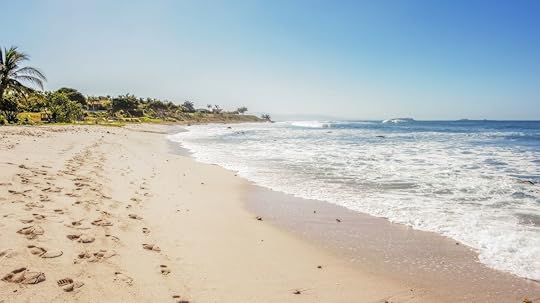
Photo: RachelKolokoffHopper/Shutterstock
If you want more luxury than you’ll find in Sayulita, then Punta Mita, a one-hour drive south, may be the place for you. You don’t have to go all out and stay at the Four Seasons in Punta Mita. You could also rent a waterfront villa looking out over the pearly clean sand and surf out at La Lancha, a reef break with a wave that goes on forever and is favored by longboarders. Alternatively, you’ll find a more peaky, faster waves at The Cove. You could paddle out to these breaks, or hire a panga — a small boat — to take you out to where the waves are breaking.
3. Saladita
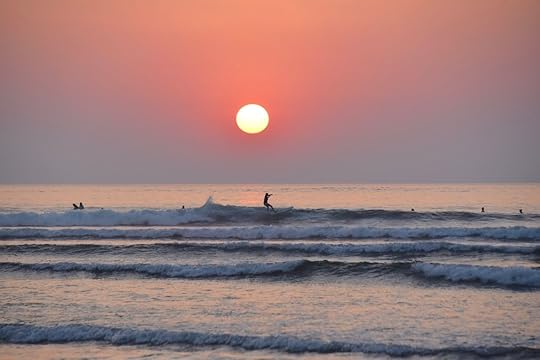
Photo: Noelle Salmi
Saladita is often confused with Sayulita, as it’s flown below the radar for many years — but that’s rapidly changing. Located north of Zihuatanejo in the southern state of Guerrero, Saladita is hard to find on a map. The nearest town is Troncones; but you can find Punta Saladita if you type in Lourdes Bar & Grill into Google Maps.
There’s little development here, save a few of the houses that foreigners (mostly Americans) started building here about twenty years ago. Before that the only surfers were locals who would come up from “Zihua” and access the beach with machetes. Lourdes was the first place to rent out rooms. It also serves passable food and cold beer, the real draw being the dive bar’s incredible location right in front of the wave known as Ubilam. That’s Malibu spelled backward, as it’s a long, luscious break that you can ride for over a minute — but this one is a left-hander.
The wave is a longboarder’s dream, and the secret has gotten out. This year saw the third annual Mexi Log Fest, a very festive longboard competition, and Lourdes is now a much hipper looking bar with new owners. If you like a wave with a bit more oomph, but you still want to explore this still low-key and incredibly affordable part of Mexico, head due north to El Rancho, an amazing left-hander that gets a lot more size than the wave right in at Punta Saladita; or hire a boat to take you to Palo Alto, where you’ll find some zippy lefts.
4. Cabo — East Cape

Photo: Noelle Salmi
From either Cabo San Lucas or San Jose del Cabo — or directly from the airport servicing both cities, which lie at the bottom of the Baja California peninsula — you can drive toward the western or eastern side of said peninsula. The eastern side only works on a south swell, from May through August. During those months, though, the mostly right-handers at spots like Shipwreck and Nine Palms are glorious — so much so that hardcore surfer families will pilgrimage south of the border in RVs and camper vans and park themselves on the beach here for weeks at a time.
You could also bring your camping gear by plane and rent a car upon arrival. Set up a tent and a campfire on the beach. Keep it simple and have quesadillas for dinner, washed down with some cold beer. The advantage of a lousy night’s sleep in the tent is that you can be in the water by 6:00 AM and get in a glorious hour before most other surfers, and two hours before any wind picks up. If you’re feeling extra adventurous, the surf breaks continue on up the coast to spots like El Rincón and Punta Arenas.
5. Cabo — Pacific Coast

Photo: VG Foto/Shutterstock
On the Pacific coast, the waves break all year, as they can get all the swells that come their way. Wind can be the tricky factor here. About 45 minutes from the city you’ll hit Cerritos, where the swells come up against and large knoll in the sea and make a consistent right that’s always working — but that can be too much for novice surfers. Accommodations in Cerritos include Cerritos Beach Club and the swankier Hacienda Cerritos.
Just up the coast from Cerritos you’ll find San Pedrito, an often better break at a river mouth. Further north still is Todos Santos. Despite being home to a wave called Killers, which is a legitimately terrifying big wave, Todos Santos offers plenty of surf spots perfect for beginners. Baja Surf Yoga even hosts a women’s surf and yoga retreat at Todos Santos, many of whose participants are novice surfers.
6. Salina Cruz — Oaxaca
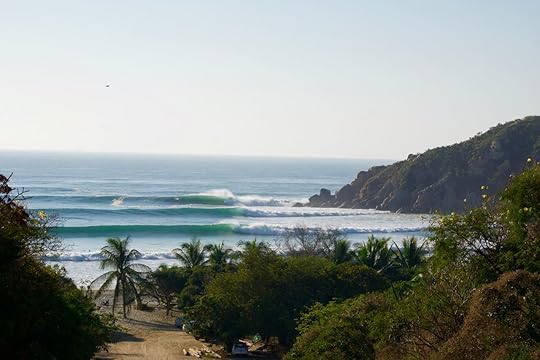
Photo: Russel E Sims/Shutterstock
In the state of Oaxaca, the south-facing surf spot of Barra de la Cruz and Salina Cruz are some of the best surfing in the entire country — offering up hollow right-handers coveted by the continent’s best surfers. Due east of La Barra is Salina Cruz, where Punta Conejo offers another consistent right-hander. The town itself is fairly industrial, but you’re not far from tropical beaches, and the buzz around Punta Conejo has been seen a proliferation of new surf schools in the area.
The real danger now is that the governor of Oaxaca has signed onto a deal to expand the region’s port area and connect Mexico’s Pacific and Caribbean coasts here, the narrowest isthmus in Mexico. According to a report by Surfline, the project will destroy the wave at Punta Conejo and many other surfable breaks in the Salina Cruz area. The environmental impact may be devastating as well. If you’re a surfer who cares about the environment and doesn’t want to see a truly epic wave be lost to poorly thought out industrial plans, go to Salina Cruz, surf this incredible wave, and make your voice heard. 

More like this: Raglan, New Zealand, is the coolest surf town you’ve never heard of
The post Your guide to the best surf spots in Mexico appeared first on Matador Network.

American teenagers suspected murder

After last week’s tragic murder of an Italian military police officer in Rome, photos have surfaced of the suspect previously posing with a large knife on social media.
Official reports reveal that Finnegan Lee Elder and Gabriel Christian Natale Hjorth, two American tourists aged 19 and 18, had an altercation with two undercover officers of the Carabinieri last Friday. The dispute allegedly ended with Finnegan Lee Elder stabbing to death officer Mario Cerciello Rega with a “knife of considerable size” and fleeing the scene.
According to CNN, the murder weapon, a seven-inch-long knife, which was later found in the teenagers’ hotel room hidden under a ceiling panel, was “carried into Italy from the United States.” According to court documents seen by CNN, Finnegan Lee Elder recognized the knife thought to be the murder weapon “as his own.”
Although the Instagram accounts of both Finnegan Lee Elder and Gabriel Christian Natale-Hjorth seem to have been deleted in the wake of their arrest and confession, Instagram photos have been submitted to Matador Network by an anonymous user, depicting the accused killer posing with a knife and a wad of cash, and another of the suspect drinking and holding a long object that appears to be a knife, as well.

Photo: @fintrill/Instagram

Photo: @fintrill/Instagram
The photos above, thought to have been posted to the suspect’s Instagram prior to the alleged crime, have not been confirmed as authentic, and the date the photos were posted is unknown. There is no currently disclosed evidence linking the knife pictured above with the murder weapon.
The suspects are still being questioned in Rome, and specific charges have yet to be leveled. 

More like this: Police officer murdered in Rome by two 19-year-old Americans on vacation
The post New photo of American tourist accused of killing Italian police shows teen suspect posing with knife on Instagram appeared first on Matador Network.

Everything to know about the bokit

Quintessential Caribbean cuisine is bursting with zest and character. There is a fusion of taste here that just can’t compare to any other region. Creole, African, European, and Asian influences have all contributed to the history of island food. Guadeloupe is a prime example of how the blending of ingredients can create a sensational dish. In the Caribbean, simplistic seasoned meals come with complex backstories. Bokit, a sandwich made with fried dough, is no exception.
Guadeloupe, an archipelago in the Antilles, is an overseas region of France. The indigenous Arawak and Carib people lived on the island before the Spanish, British, and French fought to make the island a colony. The French brought African slaves and spices from Asia, and Guadeloupe became a melting pot of culinary influence. It was this mix of ingredients and styles of cooking that led to the bokit’s creation.
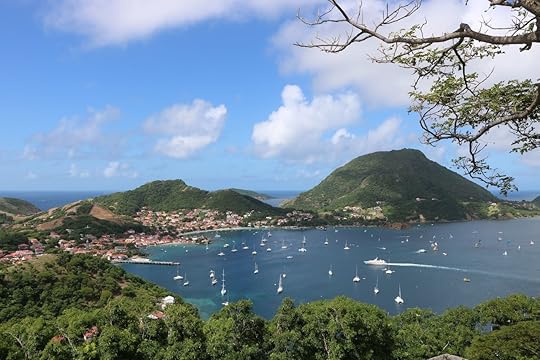
Photo: Fayreth/Shutterstock
Many people not from the islands think traditional Caribbean food is a plate of rice piled high with seafood. Bokit, on the other hand, is similar to a sandwich, though it’s not your typical beach shack meal. While the origins aren’t exactly clear, like most pedestrian meals and street food, it became popular because of its low cost and convenience.
Like many beloved street foods, it’s unclear who invented the bokit and when. It has similarities, however, to the Johnny cakes of New England that English settlers learned to make from Native Americans.
“Shawne Indians used to cook a corn cake on hot stones. They called it ‘Jonikin,’” said Lelene, the owner of a patisserie called Lèlène Pastry that specializes in sweets and bokits. Lelene connects indigenous cooking techniques with modern day meals. “Settlers would have inspired [it] by adding wheat flour and nicknaming it ‘journey cake’ because this cake could withstand long journeys. Finally, the name Johnny cake is what remained.”
View this post on InstagramA post shared by Lèlène (@lelene_pastry) on May 2, 2019 at 11:16pm PDT
The Johnny cake evolved even further. Lelene shares that the Caribbean culture has different names for similar breads: “djoncake” in Dominica and Barbados, or “dannkit” in the French islands. “The product evolved in form and content to a sandwich and took the final name of bokit in Guadeloupe,” she said. “It’s here where it became a typical specialty.”
Local baker Natacha Wind defined the dish as a “Caribbean specialty made with simply flour and water.” Both cooks revealed that while there are a few staple ingredients, the recipe can vary slightly from person to person. While bokit is fairly standard, there are a few opportunities for the chef to insert their own personality into the dish.
A mix of flour, water, and salt creates the crispy, disc-shaped bun. Balls of dough float atop crackling oil, expanding as they cook, quickly transforming from an oily mass into a crispy concoction.
The construction is what makes it an ideal street food. The pita-style bread is made to order and served hot, stuffed with ingredients and wrapped in foil. Bokits can be filled with proteins like fish, chicken, or pork, and then topped with sauces, lettuce, and tomato.
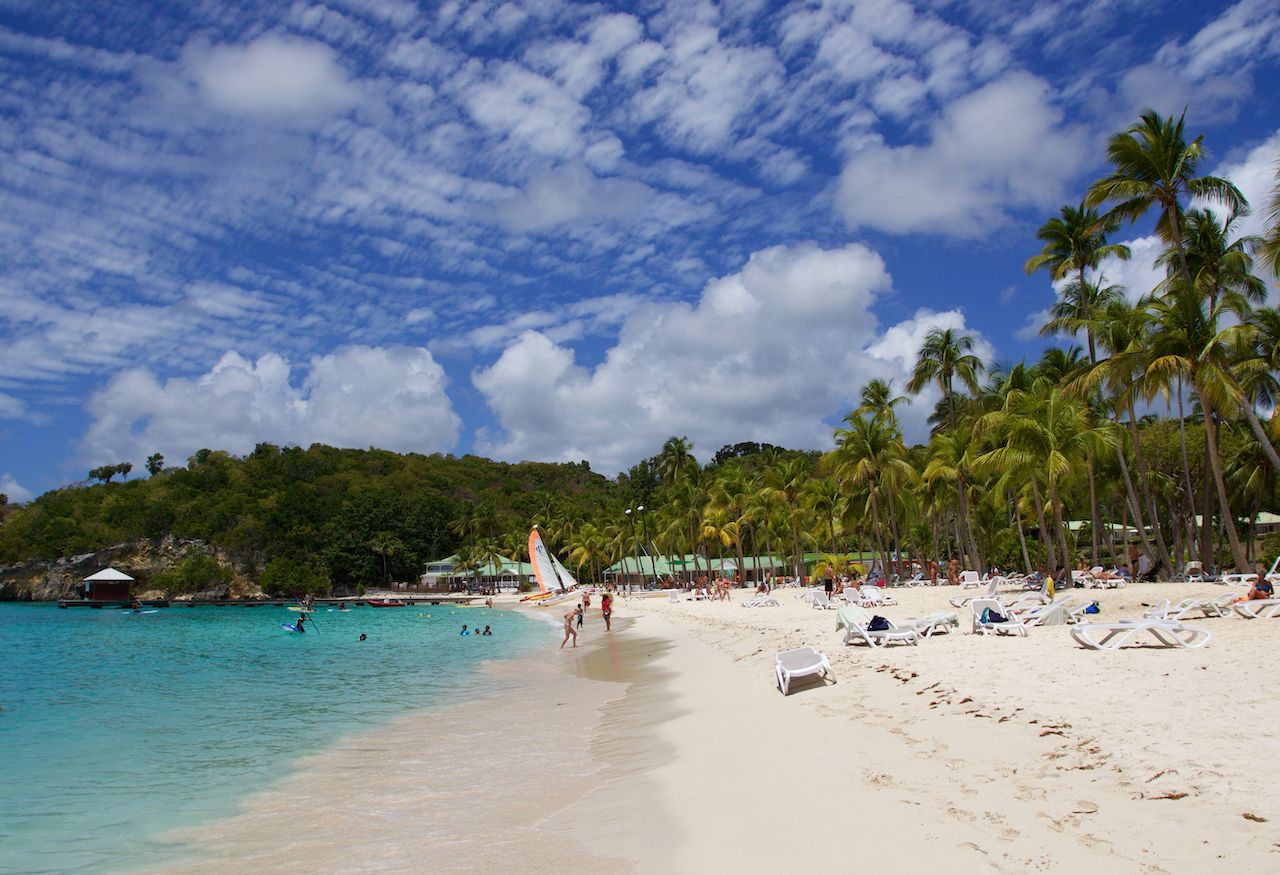
Photo: Claudio Soldi/Shutterstock
While possibilities for what goes into the bokit are endless, Natacha said there are traditional favorites.
“Garnished with chicken or cod, one can make various combinations of flavors,” she explained. “It’s inevitable you’ll find these at places like communal festivals or sold at street vendors, but it’s also found in weddings, [and] birthday parties in mini size for guests.”
You’ll find roadside food stalls selling bokit peppered throughout Guadeloupe. While you can grab a sandwich in any of the four corners of this butterfly shaped archipelago, the town of Sainte-Anne, in particular the food trucks there, are where you will be spoiled with choices of different bokits. Recently, the bokit has made its way off the island and can be found in the food truck scene in cities like London, Paris, and Montreal.
While bakers like Lelene and Natacha share their bokits with the world, they most love feeding friends, family, and locals. “Caribbean people love bokit,” Lelene said. “The most important customers are the Caribbean.” 

More like this: How to eat and drink your way through Grenada, the Caribbean’s most flavorful island
The post The Caribbean’s best sandwich is a mix of history and deep-fried joy appeared first on Matador Network.

Things to do in Okinawa

Okinawa is the southernmost prefecture of Japan; a subtropical island paradise with its own distinctive culture and traditions. Home to picture-perfect beaches, colorful coral reefs, rugged mangrove jungles, and a laid-back vibe you won’t find anywhere else in the country, it’s the ideal vacation spot.
The largest and most popular island in the chain is Okinawa island. However, there are over 100 more isles to explore, dotted across the ocean between mainland Japan and Taiwan. So if you dream of having a beach all to yourself — complete with flawless white sand and sparkling azure waters — head out to one of these four other fantastic islands, and your dream may well come true.
1. Ishigaki

Photo: Thanksphoto/Shutterstock
Ishigaki is the main island of Okinawa’s Yaeyama island group, and the gateway to many of the smaller, less accessible isles. Ishigaki city is lively enough that you won’t feel cut off from civilization, yet the beaches that line the island’s coast are among the best in the country. One of the most beautiful spots is Kabira Bay, an oasis of emerald ocean where black pearls are cultivated. A glass-bottomed boat ride is the best way to enjoy it.
For those who prefer a more active vacation, the mountainous area in the center of the island offers some great hiking trails. One of the best is a steep forest route up Mount Omoto, which at 1,722 feet is the highest mountain in Okinawa.
Ishigaki is also a world-class spot for snorkeling and scuba diving, thanks to the diverse marine life and excellent visibility. Whether you’re an experienced diver or a complete newbie, don’t miss the chance to dive with manta rays. Watching these huge, elegant creatures glide nonchalantly around you really is an experience you’ll never forget.
Getting there: You can fly to New Ishigaki Airport from Naha city on Okinawa island, or from Tokyo, Osaka, Nagoya, or Fukuoka in mainland Japan. International flights also run from Taipei and Hong Kong.
2. Taketomi

Photo: shogo sawada/Shutterstock
Just off the coast of Ishigaki lies Taketomi, a tiny island where the traditional culture and heritage of ancient Okinawa has been perfectly preserved. It’s home to an authentic Ryukyu village — Ryukyu being the old name for Okinawa — that you can explore either on foot, by bicycle, or on a water buffalo-drawn cart. There are no motor vehicles on the island.
The village’s single-storied buildings are roofed in red tiles and surrounded by low stone walls — completely different from the usual Japanese architecture. Keep an eye out for the multitude of distinctive shisa statues staring down at you from gateways and rooftops. These guardian animals look like a cross between a lion and a dog, and are believed to ward off evil spirits while keeping the good ones in.
Be sure to also visit Kaiji Beach on Taketomi’s west coast. This blissfully peaceful stretch of coastline is famous for its star-shaped sand, which is actually the skeletal remains of tiny sea creatures. Sift through the sand beneath you as you relax, because finding these stars is supposed to bring you good luck.
Getting there: There is no airport on Taketomi. Ferries run approximately every half hour from Ishigaki island, and the journey takes 10-15 minutes.
3. Miyako
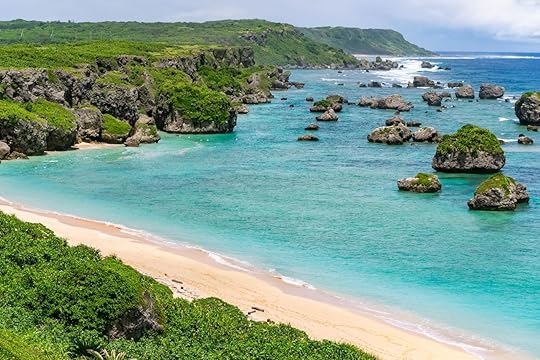
Photo: okimo/Shutterstock
If beaches are what you’re after, Miyako is the place to go. The untouched, sugar-soft sand is almost blindingly white, and the sea is unbelievably clear thanks to the lack of rivers bringing soil into the water. The color of the ocean here is like something out of a painting, utterly transparent at the shoreline and blending into darker shades of turquoise, teal, and aquamarine as it gets deeper.
The purity of its waters also makes Miyako perfect for snorkeling and scuba diving. It’s possible to swim with sea turtles, marvel at stunningly beautiful coral reefs, or — for more experienced divers — explore the rugged arches, tunnels, and caves further below.
If you’d rather stay on land, the Botanical Garden is a picturesque place to walk and admire the tropical flora. Alternatively, head to the southeastern tip of the island and tour the historic Higashi Hennazaki lighthouse.
After dark you’ll see that the sky is just as pure as the sea, making Miyako one of the best places in Japan for stargazing. All in all, it’s not hard to see why this island is considered a paradise.
Getting there: You can fly to Miyako Airport from Naha city on Okinawa island, Ishigaki island, or from Tokyo, Osaka, Nagoya, or Fukuoka in mainland Japan.
4. Iriomote
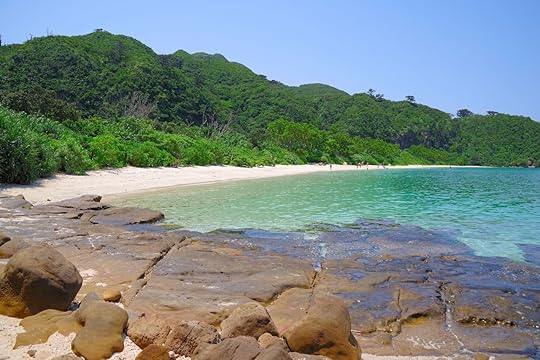
Photo: shikema/Shutterstock
Despite being Okinawa prefecture’s second-largest island, Iriomote is truly untouched. It’s almost entirely covered in lush mangrove forests and dense jungle foliage, which conceal all sorts of rare plants and animals. These include the elusive Iriomote wildcat, of which there are thought to be fewer than 100.
One of the best ways to see the mangroves is by river. You can take river cruises up the island’s two main waterways, or for a more adventurous experience try going by kayak. Some tours combine cruising or kayaking with hiking, allowing you an even closer look at the seemingly-impenetrable jungle.
The best hiking trails are those that take you to the island’s stunningly beautiful waterfalls. The tallest of these is Pinaisara Falls, which has a drop of around 180 feet. To reach them, you must first kayak upriver for about 30-40 minutes, and then hike a further 30-40 minutes into the jungle. The magnificent view is more than worth the effort though, and the plunge pool provides the perfect place to cool off after all that exertion.
Getting there: There is no airport on Iriomote. Ferries run every hour or two from Ishigaki island, and the journey takes 35-50 minutes, depending on which port you sail to. 

More like this: The best beaches all over Japan — and the rules you should know before visiting them
The post Four stunning islands you have to visit in Okinawa, Japan appeared first on Matador Network.

Proposed hotel on Norwegian cliff
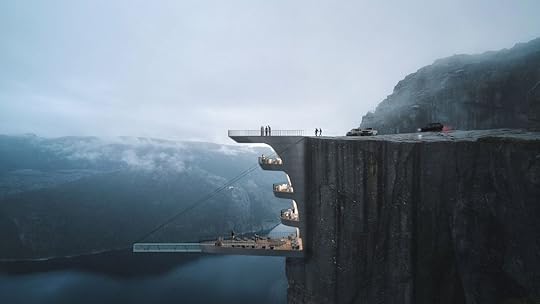
There are some very unusual hotels out there, but few beat the hotel concept created by the Turkish Hayri Atak Architectural Design Studio.
The studio is proposing a boutique hotel that would be built against the famous Preikestolen, one of Norway’s most famous natural cliffs, and sit 1,982 feet in the air.

Photo: Hayri Atak Architectural Design Studio
The proposed hotel design calls for a series of frightening curved balconies on several levels, a viewing platform on the top deck, and an insane floating, outdoor swimming pool. As a guest, you would have unobstructed views of Lysefjord — and probably a serious case of dizziness.
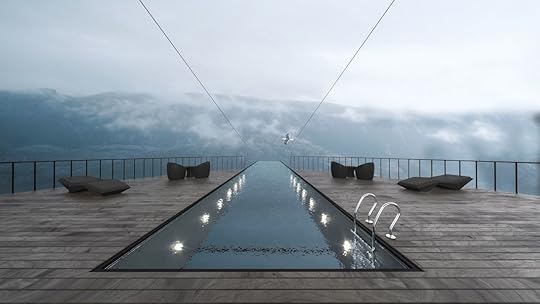
Photo: Hayri Atak Architectural Design Studio

Photo: Hayri Atak Architectural Design Studio
The hotel is only a concept and even if it looks cool, we hope it remains just that — the beauty of Preikestolen lies in its remoteness (it’s a four-hour hike that can only be done between May and October) and gorgeous wilderness. 

More like this: The most jaw-dropping hotel balcony views in the world
The post Proposed boutique hotel would sit on 2,000-foot Norwegian cliff appeared first on Matador Network.

Matador Network's Blog
- Matador Network's profile
- 6 followers



